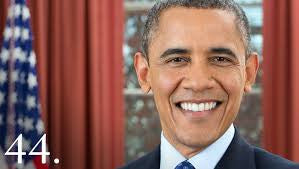
Bilinguals in the United States
Bilinguals in the United States
Who are the millions of bilinguals in the US?
Ever since I worked on my first book on bilingualism back in the early eighties, I have been fascinated by the state of bilingualism in the United States. And over the years, I have followed its evolution.
It is important to realize that the U.S. Census Bureau does not keep track of bilingualism as such, unlike other countries such as Canada. But ever since 1980, the language questions asked (Does this person speak a language other than English at home? What is this language? How well does this person speak English?) allow us to work out, to a large extent, who is bilingual and where bilinguals can be found.
The 2007 American Community Survey found that a bit more than 55 million inhabitants spoke a language other than English at home. Among those people, some 51 million also knew and used English and hence were bilingual. This represents 18 percent of the population. If we add to this number bilingual children under 5 (not covered by the survey) as well as people who use a second or third language in their everyday lives but only English at home, then probably close to 20 percent of the population can be considered bilingual.

The percentage of bilinguals is definitely on the rise. It was 11 percent in 1980, 14 percent in 1990, to reach close to 20 percent currently. As was noted in an earlier post (see here), bilingualism in the US is very diverse, pairing English with Native American languages, older colonial languages, recent immigration languages, American Sign Language (see here), and so on. English-Spanish bilinguals represent about half of all bilinguals and hence Spanish is definitely America's second language. Other important languages, but to a far lesser extent, are Chinese, French, Tagalog, Vietnamese, German and Korean.
Over the past thirty years, many "traditional" immigrant languages have declined in number. Among these we find Italian, Yiddish, Polish and Greek. This is largely due to aging populations and dwindling migrant flows from the countries where those languages are used.
Bilinguals are not equally distributed across the nation. Some states contain proportionally very few (e.g. West Virginia, Kentucky, Montana) whereas others have a far greater proportion (e.g. California, New Mexico, Texas, Arizona, etc.). As for cities, the ones with the most bilinguals are New York, Los Angeles and Chicago.
If one considers the geographical distribution of language pairs (English and a minority language), then English-Spanish bilinguals are mostly found in the Southwest and Florida, English-Chinese bilinguals in California and New York, bilinguals with English and a Slavic language in Illinois, New York and New Jersey, and English-German bilinguals in the Dakotas and Pennsylvania.
Bilingualism in the United States has traditionally been transitional–a passage, over one or two generations, from monolingualism in a minority language to monolingualism in English.
However, there is an increasing awareness that the country's knowledge of the languages of the world is a natural resource that should not be wasted. Hence a growing number of families are fostering bilingualism either by making sure the home's minority language and culture are kept alive or by encouraging their children to acquire and use a second language.

With the rising number of bilinguals in the United States over the years, we can dream that President Obama's suggestion in 2008 during a rally may just be the beginning of a new trend: "You should be thinking about .... how can your child become bilingual? We should have every child speaking more than one language".
References
Shin, Hyon B. and Robert A. Kominski. 2010. Language Use in the United States: 2007. American Community Survey Reports, ACS-12. U.S. Census Bureau, Washington, DC.
François Grosjean. Bilingualism in the United States. Chapter 2 of Grosjean, F. (1982). Life with Two Languages: An Introduction to Bilingualism. Cambridge, Mass: Harvard University Press.
"Life as a bilingual" posts by content area.
François Grosjean's website.
Post written by François Grosjean.

